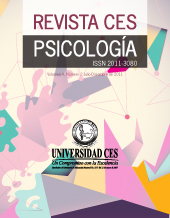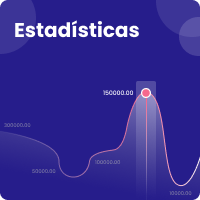Nuevos enfoques de maximización: evidencia de correlaciones con malestar y bienestar en población chilena adulta
DOI:
https://doi.org/10.21615/cesp.13.1.2Palabras clave:
Maximización, Comportamiento Maximizador, Comportamiento Satisfactorio, Toma de Decisiones, Malestar, Pesar, BienestarResumen
Existe carencia de consenso teórico acerca del proceso de tomar decisiones y particularmente respecto del constructo maximización. Recientemente, se propuso dos enfoques conceptuales sobre maximización y sus respectivos instrumentos de evaluación. El primero considera que el concepto de maximización está constituido por dos dimensiones, meta y estrategia. El segundo diferencia entre dos tipos de maximización según el modo de decidir de un individuo, uno resuelto y otro temeroso. Respecto del primer enfoque se desconocen eventuales relaciones empíricas de meta y estrategia con consecuencias emocionales sobre el bienestar y malestar mientras se decide, mientras existe la duda si la distinción propuesta en el segundo enfoque se aplica también a población de adultos y en contextos diferentes al europeo. En el presente trabajo se evalúan asociaciones empíricas concernidas para cada enfoque respecto de indicadores de malestar y bienestar mediante un conjunto de hipótesis. Una muestra de 624 adultos chilenos de ambos sexos (20 a 70 años) respondió ocho instrumentos sobre maximización, sus componentes y sus tipos, y su bienestar y malestar. Los resultados para ambos enfoques muestran asociaciones mayores con índices de malestar que de bienestar. Los resultados para el primer enfoque muestran asociación con índices de malestar y bienestar más intensa para la dimensión de estrategia que la de meta. En el segundo enfoque estas asociaciones son fuertes y mayores para el tipo de maximización temerosa que para resuelta. Los resultados contribuyen a incrementar la comprensión del constructo de maximización, al mostrar simultáneamente que el aumento en la estrategia de búsqueda de alternativas y el estilo temeroso de maximización, se asocian directamente con dificultad para decidir y con experimentar pesar.
Descargas
Referencias bibliográficas
Abbe, A., Tkach, C., & Lyubomirsky. S. (2003). The art of living by dispositionally happy people. Journal of Happiness Studies, 4, 385-404. doi: http://dx.doi.org/10.1023/B:JOHS.0000005769.54611.3c
Besharat, A., Madik, D., & Carrillat, F. (2014). Are maximizers blind to the future? When today’s best does not make for the better tomorrow. Mak Lett, 25, 77-91. doi: http://dx.doi.org/10.1007/s11002-013-9243-4
Briggs, S. R., & Cheek, J. M. (1986). The role of factor analysis in the development and evaluation of personality scales. Journal of Personality, 54(1), 106–148. doi: https://doi.org/10.1111/j.1467-6494.1986.tb00391.x
Chang, E.C., Lin, N.J., Herringshaw, A.J., Sanna, L.J., Fabian, C.G. Perera, M.J., & Marchenko, V.V. (2011) Understanding the link between perfectionism and adjustment in college students: Examining the role of maximization. Personality and Individual Differences, 50, 1074-1078. doi: http://dx.doi.org/10.1016/j.paid.2011.01.027
Cheek, N., & Schwartz, B. (2016). On the meaning and measurement of maximization. Judgment and Decision Making, 11(2), 126-146. doi: http://journal.sjdm.org/16/16129b/jdm16129b.pdf
Cote Rangel, L.P., & García Barrera, A.M. (2016). Estrés como factor limitante en el proceso de toma de decisiones: una revisión desde las diferencias de género. Avances en Psicología Latinoamericana, 34(1), 19-28. doi: http://dx.doi.org/10.12804/apl34.1.2016.02
Dar-Nimrod, I., Rawn, C. D., Lehman, D. R., & Schwartz, B. (2009). The maximization paradox: The costs of seeking alternatives. Pers. and Individual Differences, 46, 631-635. doi: http://dx.doi.org/10.1016/j.paid.2009.01.007
Dalal, D. K., Diab, D. L., Zhu, X. S., & Hwang, T. (2015). Understanding the construct of maximizing tendency: A theoretical and empirical evaluation. Journal of Behavior and Decision Making, 28, 437-450. doi: https://doi.org/10.1002/bdm.1859
Diab, D.L, Gillespie, M.A., & Highhouse, S. (2008). Are maximizers really unhappy? The measurement of maximizing tendency. Judgment and Decision Making, 3(5) 364-370.
Diener, E., Larson Emmons, R.A., Larsen, R.J., & Griffin, S. (1985). The satisfaction with the life scale. Journal of Personality Assessment, 49, 71-75. doi: https://doi.org/10.1207/s15327752jpa4901_13
Ďuriník, M., Procházka, J., & Cígler, H. (2018). The Short Maximization Inventory. Judgment and Decision Making, 13(1) 123-136.
Fernández Arbeláez, J. I., & Villada Zapata, J. (2015). Analysis of Evidence in Decision-Making Research between 2002 and 2012. Avances en Psicología Latinoamericana, 33(1), 105-120. doi: http://dx.doi.org/10.12804/apl33.01.2015.08
Harman, J. L., Weinhardt, J. M., & González, C. (2018). Maximizing Scales Do Not Reliably Predict Maximizing Behavior in Decisions from Experience. Journal of Behavioral Decision Making, 31(3), 402–414. doi: https://doi.org/10.1002/bdm.2070
Hair, J.F., Anderson, R.E., Tatham, R.L., & Black, W.C. (1999). Análisis Multivariante (5ª Ed.). Madrid: Prentice-Hall.
Han, B.-C. (2017). La sociedad del cansancio (2ª Ed.). España: Herder
Hughes, J., & Scholer, A. A. (2017). When Wanting the Best Goes Right or Wrong: Distinguishing Between Adaptive and Maladaptive Maximization. Personality and Social Psychology Bulletin, 43(4), 570–583. doi: https://doi.org/10.1177/0146167216689065
Iyengar, S., Wells, R., & Schwartz, B. (2006). Doing better but feeling worse: Looking for the best job undermines job satisfaction. Psychological Science, 17, 143-150. doi: http://dx.doi.org/10.1111/j.1467-9280.2006.01677.x
JASP Team. (2017). JASP (Version 0.8.3) [Computer software]. https://jasp-stats.org/
Lipovetsky, G. (2008). La sociedad de la decepción. Entrevista con Bertrand Richard. Barcelona, España: ANAGRAMA.
Luybomirsky, S., & Lepper, H.S. (1999). A measure of subjective happiness: preliminary reliability and construct validation. Social Indicators Research, 46, 137-155. doi: https://doi.org/10.1023/A:1006824100041
Luan, M., & Li, H. (2017). Good enough-compromise between desirability and feasibility: An alternative perspective on satisficing. J. of Experimental Social Psychology, 70, 110-116. doi: http://dx.doi.org/10.1016/j.jesp.2017.01.002
Misuraca, R., Faraci, P., Gangemi, A., Carmeci, F. A., & Miceli, S. (2015). The Decision Making Tendency Inventory: A new measure to assess maximizing, satisficing, and minimizing. Personality and Individual Differences, 85, 111–116. doi: http://dx.doi.org/10.1016/j.paid.2015.04.043
Misuraca, R., & Fasolo, B. (2018). Maximizing versus satisficing in the digital age: Disjoint scales and the case for “construct consensus”. Personality and Individual Differences, 121, 152–160. doi: https://doi.org/10.1016/j.paid.2017.09.031
Moyano-Díaz, E. (2010). Exploración de algunas propiedades psicométricas de las escalas de satisfacción vital, felicidad subjetiva y autopercepción de salud. En Moyano-Díaz, E. (Ed), Calidad de Vida y Psicología en el bicentenario de Chile (pp. 447-470). Santiago, Chile: Gráfika Marmor.
Moyano-Díaz, E., Martínez-Molina, A., & Ponce, P. F. (2014). The price of gaining: maximization in decision-making, regret and life satisfaction. Judgment and Decision Making, 9(5), 500-509.
Moyano-Díaz, E. Cornejo, F., Carreño, M., & Muñoz, A. (2013). Bienestar subjetivo en maximizadores y satisfascedores. Terapia Psicológica, 13(3), 373-380. doi: https://dx.doi.org/10.4067/S0718-48082013000300001
Moyano-Díaz, E., Palomo-Vélez, G., & Mendoza-Llanos, R. (2016). Adaptación preliminar del Maximization Inventory (MI) de Turner et al. (2012) en muestra de estudiantes universitarios chilenos. Documento de trabajo (Working Paper), Grupo de Investigación en Calidad de Vida y Ambientes Saludables, Facultad de Psicología, Universidad de Talca (Chile).
Moyano-Díaz, E., & Ramos, N. (2007). Bienestar Subjetivo: Midiendo satisfacción vital, felicidad y salud en población chilena de la Región del Maule. Universum, 22(2), 184–200. doi: http://dx. doi.org/10.4067/S0718-23762007000200012
Nenkov, G.Y., Morrin, M., Ward, A., Schwartz, B., & Hulland, J. (2008). A short form of the maximization scale: Factor structure, reliability and validity studies. Judgment and Decision Making, 3, 371-388.
Newman, D. B., Schug, J., Yuki, M., Yamada, J., & Nezlek, J. B. (2018). The negative consequences of maximizing in friendship selection. Journal of Personality and Social Psychology, 114(5), 804-824. doi: http://dx.doi.org/10.1037/pspp0000141
Parker, A. M., Bruine de Bruin, W., & Fischoff, B. (2007). Maximizers versus satisficers: Decision Making styles, competence, and outcomes. Judgment and Decision Making, 2, 342-350.
Polman, E. (2010). Why are maximizers less happy than satisficers? Because they maximize positive and negative outcomes. J. of Behav. Dec. Making, 23, 179-190. doi: http://dx.doi.org/10.1002/bdm.647
Purvis, A., Ryan T.H., & Iyer, R. (2011). Exploring the role of personality in the relationship between maximization and well-being. Personality and Individual Differences, 50(3), 370-375. doi: http://dx.doi.org/10.1016/j.paid.2010.10.023
Richardson, C.M.E., Ye, H.J., Ege, E., Süh, H., & Rice, K. G. (2014). Refining the measurement of maximization: Gender invariance and relation to psychological well-being. Personality and Individual Differences, 70, 229-234. doi: http://dx.doi.org/10.1016/j.paid.2014.06.048
Rim, H., Turner, B.M., Betz, N.E., & Nygren, T. E. (2011). Studies of the dimensionality, correlates, and meaning of measures of the maximizing tendency. Judgment and Decision Making 6, 565-579.
Schwartz, B., Ward, A., Monterosso, J., Lyubomirsky, S., White, K., & Lehman, D. (2002). Maximizing versus satisficing. J. of Personality and Social Psychology, 83, 1178-1197. doi: http://dx.doi.org/10.1037/0022-3514.83.5.1178
Schwartz, B. (2004). The paradox of choice: Why more is less. New York: Harper Perennial.
Schermelleh-Engel, K., Moosbrugger, H., & Müller, H. (2003). Evaluating the Fit of Structural Equation Models: Test of Significance and Descriptive Goodness-of-Fit Measures. Methods of Psychological Research Online, 8(2), 23-74.
Simon, H. A. (1955). A behavioral model of rational choice. Quart. J. of Economics, 59, 99-118. doi: http://dx.doi.org/10.2307/1884852
Spark, E.A., Ehrlinger, J., & Eibach, R.P. (2012). Failing to commit: Maximizers avoid commitment in a way that contributes to reduced satisfaction. Personality and Individual Differences, 52, 72-77. doi: http://dx.doi.org/10.1016/j.paid.2011.09.002
Turner, B., Rim, H. B., Betz, N., & Nygren, T. E. (2012). The Maximization Inventory. Judgment and Decision Making, 7, 48-60.
Weinhardt, J.M., Morse, B.J., Chimeli, J., & Fisher, J. (2012). An item response theory and factor analysis examination of two prominent maximizing tendency scales. Judgment and Decision Making, 7, 644-658.
Descargas
Publicado
Cómo citar
Número
Sección
Licencia
Derechos de autor 2019 CES Psicología

Esta obra está bajo una licencia internacional Creative Commons Atribución-NoComercial-CompartirIgual 4.0.
Revista CES Psicología ISSN 2011 3080
Facultad de Psicología, Universidad CES Primera edición 2008. Última actualización Mayo 18 de 2022. Todos los derechos reservados. Hecho el depósito legal que exige la ley.
Se autoriza la reproducción total o parcial de los artículos citando la fuente y el autor. This publication may be reproduced by mentioning the source and the authors.
| Estadísticas de artículo | |
|---|---|
| Vistas de resúmenes | |
| Vistas de PDF | |
| Descargas de PDF | |
| Vistas de HTML | |
| Otras vistas | |




